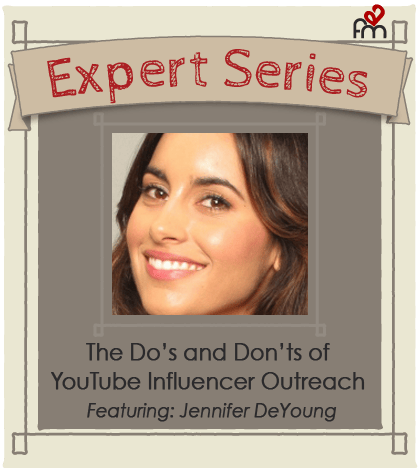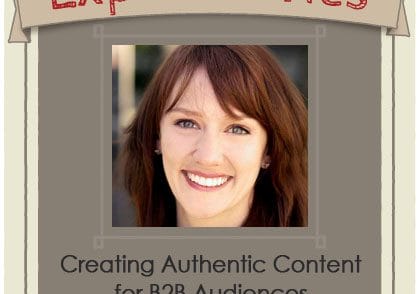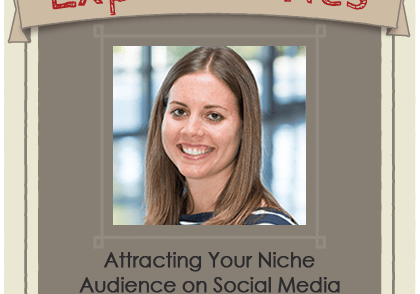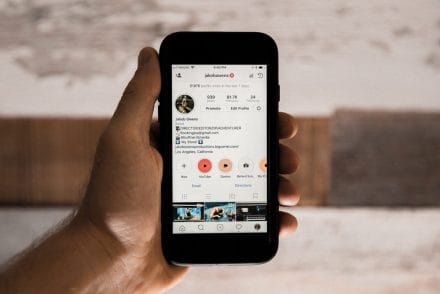Video is a trending media format that will grow in importance in 2015. In this interview you’ll learn about insider tactics for working with YouTube influencers to promote your products on video.
This month we feature Jennifer DeYoung who recently joined global lifestyle and fitness brand Tone It Up as their digital media manager. You might recognize Tone It Up girls Katrina and Karena from Bravo TV’s Toned Up.
Jennifer shares valuable advice on YouTube product placement. She has built a wealth of experience at Maker Studios, Inc. (Disney) where she had managed relationships with world’s most-watched YouTube stars for product placement and promotion with household names like Bare Minerals and Macy’s.
BWF: Do you consider YouTube a social network?
DeYoung: I know there’s a lot of debate around YouTube being considered a social network. It doesn’t traditionally look how the other social networks do however; YouTube is it’s own ecosystem where individuals are having conversations, connecting and sharing information. in that sense YouTube is a social hub positioned around video content.
A YouTuber that has a huge reach and that is influential can change a brand perception, and in that way it’s considered a new type of currency.
BWF: How are YouTube influencers impacting the marketing of products and services?
DeYoung: That’s a great question! Marketer es are extremely savvy and know that short form digital content is extremely powerful in catching the short attention spans that consumers have. YouTube stars are extremely influential among their online and offline communities because their fans feel emotionally connected to them in a way that goes beyond traditional forms of media. When a YouTube star mentions a particular brand, product or service they are sharing this information in a way that feels personal to their audience and in turn the audience values their opinion. In a lot of ways a YouTuber that has a huge reach and that is influential can change a brand perception, and in that way it’s considered a new type of currency.
BWF: Should brands give out free products to YouTubers?
DeYoung: It’s wise for brands to approach YouTube influencers to offer products, reviews, create web series, etc. YouTubers who get a free product are more likely to share that information with their audience and on social media in a fashion that is organic to their lifestyle.
I recommend being strategic about how much free product you give out because you don’t want to cheapen the brand. There’s kind of this perception that if it’s rare and somewhat hard to get people want it more.
YouTube in itself is its own ecosystem.
BWF: How does a brand mitigate the possibility of a negative review?
DeYoung: I actually encountered that in the past and it really depends on what the product is, the brand and how influential the YouTuber is. Sometimes it’s wise for the brand to reach out and connect and other times it’s best to leave it as is.
I do think that it is extremely important for brands and for marketers to keep tabs on the sentiment that’s happening on YouTube because YouTube itself is the 2nd largest search engine. In addition to that, if you keep your finger on the pulse of what’s happening on YouTube from a brand perspective you will learn a lot about your consumers and how to shape strategy in the future.
BWF: Is there a listening tool to monitor YouTube sentiment for brands?
DeYoung: I haven’t come across one particular tool that does that. There’s a lot of really great social media monitoring listening tools that I have used to keep tabs on all the networks, like Radian6 for example. But one tool that I really like, it’s a chrome extension called vidIQ. It helps monitor the frequency of comments and the frequency of sharing. It’s still important to read comments; it’s just a matter of going in and spending some time and connecting with the YouTube community.
There’s a subculture community for every niche out there
BWF: How do marketers find YouTube influencers?
DeYoung: There’s a subculture in the YouTube community for every possible niche and interest out there. For example, if you’re into building something as obscure as toy trains there’s a subculture and community around that genre of YouTube videos. It’s really about the brand identifying who you want to connect with.
If you’re a brand or a marketer looking to connect with influencers in a particular genre, you have to be somewhat investigative about it. Do research, understand how the YouTube space works, watch videos, subscribe to channels, create play lists, engage in conversation, understand why your consumer would want to engage with a YouTube star. What value does it bring them? How does it make them feel? Understand why fans are so voyeuristic about YouTube stars and this will give you brand a better understanding of what type of influencer you want your brand to work with. Once you identify those creators, be systematic about how you approach them and be educated about their view and subscriber count and look at how socially and tech savvy they are. Understand what their overall online presence looks like because that can dictate if this person truly has an engaged audience.
Some of the bigger YouTubers that have millions of views and make a living off of YouTube have agents.
BWF: How does one go about contacting YouTube influencers?
DeYoung: That’s a tricky question because some influential YouTubers are free agents, and they can pick and choose who they want to work with, and on what terms. Others that have millions of views and make a living off of YouTube have agents. They belong to MCNs like Maker Studios, Big Frame or Fullscreen. If you’re a brand who wants to connect with one of those YouTuber stars, then you’ll have to go through the proper channels.
BWF: Where would you find their contact information on YouTube?
DeYoung: Once you identify who you want to work with, I would do some research online and see if they have an e-mail address in their about section on their YouTube page or contact information on their website. If they have an agent, connect with them in that way. You have to do a little bit of digging.
Take a holistic approach in different ways to contact them.
BWF: If you cannot find the contact information anywhere, would it be appropriate to leave a comment on their video?
DeYoung: Try to tackle it from all angles if you really want to work with this person. Maybe they don’t check their Twitter as often, or they might use Instagram more. Leave a comment on their videos, tweet them, even leave a comment on Instagram. Take a holistic approach in different ways to contact them.
There’s nothing more inorganic than seeing a YouTube influencer that is pushing or promoting a product that doesn’t resonate with their personality or lifestyle.
BWF: What are the do’s and don’ts of working with a YouTube influencer?
DeYoung: From a marketer’s perspective, do identify someone who actually resonates with your brand – someone that would naturally or organically use your particular product or service. There’s nothing more inorganic than seeing a YouTube influencer that is pushing or promoting a product that doesn’t jive with their personality or lifestyle. It’s just so obvious that they got paid to do that. It turns off fans and subscribers will unsubscribe.
BWF: Are video influencers different from bloggers?
DeYoung: Yes! In the older days of content creation, the hub of information originated from blog content but today, each social platform has it’s own style of content. Consumers go to YouTube to watch and discover video, they don’t go to YouTube to necessarily read as they would on a blog. A YouTuber might have a blog and vice versa but the content that is created and shared on each platform is different.
It’s a delicate line to walk between what the brand wants and how the YouTuber needs to align to what they typically do to engage their audience.
BWF: What should marketers expect during the production process?
DeYoung: A lot of times the video would go through several edits between the YouTube talent and the brand before it even goes live. There’s an entire approval process between the two parties before anyone sees it. The YouTuber is the content creator and they have a particular style and things that their audience responds to, but the brand also has a particular way of doing things that they have to adhere to.
There could be a week’s worth of edits back and forth between the parties before a video even goes live. It’s a delicate line to walk between what the brand wants and how the YouTuber needs to align to what they typically do to engage their audience.
There are some up-and-coming YouTubers that have a decent following that will take those smaller budgets to do a review, or maybe even will work on a trade type deal.
BWF: How should a brand budget for YouTube influencer videos?
DeYoung: it depends on what the brand can afford and what the YouTuber is willing to do.
In my past experience, it really was contingent upon the cache’ of the brand and what their budget was for digital marketing. For example, if a brand wants to create an ongoing websites they might want it to look TV produced and in that sense it would be a bigger production even though it was going to live YouTube.
For brands who want their content to be organic and less produced looking, it would be a different type of production. It really depends on the strategy of the brand and what they are looking for.
Being strategic about how much free product you give out is really important because you don’t want to cheapen the brand.
BWF: What has been your biggest challenge working in social marketing?
DeYoung: Things are constantly changing and in a lot of ways digital media is still in its infancy. The biggest challenge is keeping up with the ever-changing landscape of digital media and to be able to pivot in strategy in a moment’s notice. The Internet never sleeps; information is being shared 24 hours a day so it’s all about being and staying informed.
BWF: How do you stay current on social media trends?
DeYoung: That’s a great question! I’m constantly checking my Twitter feed, and I read all the tech and industry publications like Mashable, Tech Crunch, Ad Age, Variety Digital, etc. On top of that, I go to a lot of the bigger digital conferences like South by Southwest, and attend different local events like Digital LA and social media week to stay connected in my community. I also do a ton of research to see what other brands are consumers are doing online. I really enjoy the economic and analytic research collection of understanding millennial audiences and their online behaviors.
BWF: What one big lesson have you learned that you wish you could teach other marketers?
DeYoung: Timing is everything. Urgency and precision is so important.
Meet Expert Jennifer DeYoung
Jennifer DeYoung is the Digital Marketing Manager at ToneItUp.com, a global lifestyle and fitness brand. She has helped some of the biggest lifestyle and consumer brands such as Maker Studios (Disney), Beachbody and Red bull connect with their millennial audience in a way that integrates digital video and social media. She currently resides in Los Angeles and holds an MBA from Mills College Graduate School of Business.
Want to be featured next? Fandom is looking for social marketing rock stars to share their case studies, tips and expertise. Check out our guest blogging page for more.






No Comments